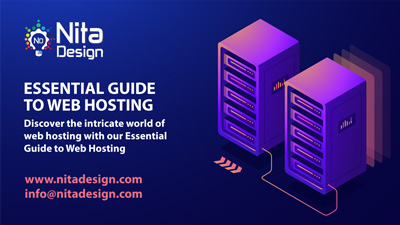IN THIS GUIDE
What are Web Domains?
In the vast ecosystem of the internet, web domains serve as the digital addresses that guide users to specific online destinations, such as websites, web applications, or email servers. Let's explore the concept of web domains in more detail to understand their significance in the digital landscape.
A web domain, often simply referred to as a domain, is a human-readable name that provides a memorable and meaningful representation of an internet resource. It consists of multiple parts, each serving a distinct purpose within its hierarchical structure:
- Subdomain: An optional component that precedes the main domain name, typically used to organize and categorize content within a larger website. For example, "blog" in "blog.example.com" indicates a subdomain dedicated to blog content.
- Second-level Domain: The primary identifier of a website, representing the unique name chosen by its owner. In the domain "google.com," for instance, "google" serves as the second-level domain.
- Top-level Domain (TLD) The highest level in the domain hierarchy, denoting the general category or purpose of the website. Common TLDs include ".com," ".org," ".net," and country-code TLDs like ".uk" or ".jp."
A web domain, often simply referred to as a domain, is a human-readable name that provides a memorable and meaningful representation of an internet resource. It consists of multiple parts, each serving a distinct purpose within its hierarchical structure:
- Distinct Identity: A domain name provides a unique and recognizable identity for a website, making it easier for users to find and remember. It serves as a digital storefront, conveying the essence of the website's content, purpose, or brand.
- Brand Recognition: Establishing a memorable domain name is essential for building brand recognition and credibility in the online marketplace. A well-chosen domain can reinforce brand identity and leave a lasting impression on visitors.
- Navigation and Accessibility: Web domains serve as navigation aids, guiding users to their desired destinations on the internet. They simplify the process of accessing websites and other online resources, enhancing user experience and engagement.
How Do Web Domains Work?
Understanding the mechanics behind web domains is essential for anyone navigating the online landscape. The Domain Name System (DNS) serves as the backbone, translating human-readable domain names into machine-readable IP addresses, enabling seamless internet connectivity. Let's delve into the intricacies of how web domains work and explore key aspects such as DNS records, domain forwarding, email setup, and the renewal process.
DNS Records and Their Importance
DNS records are the building blocks of the DNS infrastructure, defining various aspects of domain functionality. Key DNS record types include:
- A Records: Mapping domain names to IP addresses, facilitating website accessibility.
- CNAME Records: Alias records used for domain aliasing or redirection.
- MX Records: Specifying mail servers responsible for receiving email on behalf of the domain.
- TXT Records: Storing arbitrary text data, often utilized for verification and authentication purposes.
Configuring and managing DNS records correctly ensures optimal performance, security, and functionality for your domain.
Setting Up Domain Forwarding and Email Addresses
Domain forwarding allows seamless redirection of visitors from one domain to another, enhancing user experience and consolidating online presence. Meanwhile, email setup involves configuring MX records to route emails to designated mail servers and creating email addresses associated with your domain. Utilize domain management tools provided by registrars or hosting providers to set up domain forwarding and email accounts effortlessly.
Renewal Process and Avoiding Domain Expiration
Regular domain renewal is imperative to maintain ownership and prevent expiration. Key considerations include:
- Renewal Schedule: Establish a renewal schedule and set up automatic renewal if available to prevent unintentional expiration.
- Monitoring Renewal Dates: Regularly monitor renewal deadlines and ensure contact information is up to date to receive renewal reminders.
- Multi-Year Renewals: Consider renewing your domain for multiple years to secure it long-term and avoid potential loss of ownership.
By understanding the renewal process and proactively managing renewal dates, you can safeguard your domain and ensure uninterrupted online presence.
Domain Name System serves as the backbone of web domains, facilitating seamless internet connectivity through the translation of domain names into corresponding IP addresses. Understanding DNS records, domain forwarding, email setup, and the renewal process is essential for effective domain management and ensuring a robust online presence. Mastering these aspects empowers you to navigate the digital landscape with confidence and ensure the continued success of your web domain.

Difference between a Domain Name and a Website
In the realm of the internet, the terms "domain name" and "website" are often used interchangeably, but they represent distinct components of the online ecosystem. Understanding the difference between the two is essential for anyone looking to establish a presence on the web. Let's explore this disparity in more detail:
Domain Name:
- A domain name is a unique, human-readable identifier that serves as the address of a specific internet resource, such as a website, email server, or web application.
- It consists of multiple parts, including the top-level domain (TLD), second-level domain, and optional subdomain, arranged in a hierarchical structure.
- Examples of domain names include "google.com," "wikipedia.org," and "amazon.co.uk," each representing a distinct online entity.
Website:
- A website is a collection of web pages and digital content accessible via the internet, typically hosted on one or more web servers.
- It may encompass various elements such as text, images, videos, interactive features, and functionality tailored to serve specific purposes or objectives.
- Websites can range from simple static pages to complex dynamic platforms offering e-commerce, social networking, blogging, and more.
Understanding the disparity between domain names and websites is crucial for several reasons:
- Identification and Access: A domain name serves as the digital address that users enter into their web browsers to access a website. It provides a memorable and intuitive way to locate and identify online resources amidst the vastness of the internet.
- Branding and Recognition: A well-chosen domain name can enhance brand recognition and credibility, acting as a key component of a brand's online identity. It reflects the brand's values, offerings, and reputation in the digital marketplace.
- Differentiation and Ownership: While multiple websites may share the same domain extension (e.g., ".com"), each website possesses a unique combination of domain name, content, and functionality. This distinction allows website owners to differentiate their online presence and assert ownership over their digital assets.
Real-life Example
To illustrate the difference between domain name and website, consider the following example:
- Domain Name: "apple.com" - This domain name represents the online presence of the technology company Apple Inc. It serves as the address through which users access Apple's official website, explore its products, and obtain support and services.
- Website: "www.apple.com" - The website associated with the domain name "apple.com" is a comprehensive online platform showcasing Apple's products, services, and initiatives. It features product listings, support resources, news updates, and multimedia content tailored to engage and inform visitors.
While domain names and websites are closely intertwined, they fulfill distinct roles in the digital landscape. A domain name acts as the address or identifier of an internet resource, while a website comprises the actual content and functionality accessible via that address. Understanding this disparity is essential for navigating the complexities of the online world and leveraging digital assets effectively.
Choosing the Right Web Domain
Selecting the perfect domain name for your website is akin to choosing the right location for a brick-and-mortar store—it can significantly impact your brand's visibility, accessibility, and ultimately, its success. Let's delve into the intricacies of this process to help you make an informed decision.
Understanding the Key Factors
- Branding: Your domain name is a vital component of your brand identity. It should reflect your brand's personality, values, and offerings. Aim for a domain name that resonates with your target audience and aligns with your brand image.
- Memorability: A memorable domain name is easier for users to recall and share with others. Avoid complex or lengthy names that are prone to typos or confusion. Opt for simplicity and clarity to ensure your domain sticks in the minds of visitors.
- Relevance: The relevance of your domain name to your website's content or purpose is crucial for attracting the right audience. Choose a name that accurately represents what your website is about, making it easier for users to understand what to expect.
- SEO: While not as impactful as it once was, incorporating relevant keywords into your domain name can still provide a slight SEO boost. However, prioritize user experience and brand identity over keyword stuffing, as search engines prioritize quality content and user intent.
Brainstorming Tips and Common Pitfalls
- Be Creative but Clear: Brainstorm unique and creative domain name ideas, but ensure they are easy to spell, pronounce, and remember. Avoid using hyphens, numbers, or obscure words that may confuse users.
- Consider Long-Term Branding: Think beyond current trends or industry buzzwords when selecting a domain name. Choose a name that will stand the test of time and remain relevant as your brand grows and evolves.
- Check Availability Across Platforms: Before finalizing a domain name, ensure it is available not only as a website domain but also on social media platforms and other online channels. Consistent branding across all channels is essential for brand recognition.
- Avoid Legal Issues: Conduct thorough research to ensure your chosen domain name does not infringe on existing trademarks or copyrights. This can save you from potential legal headaches down the road.
Brainstorming Tips and Common Pitfalls
- Domain Registrars: Popular domain registrars like GoDaddy, Namecheap, and Google Domains offer user-friendly search tools to check domain availability and register your chosen domain name.
- Domain Name Generators: Online tools like NameMesh, DomainWheel, and Lean Domain Search can help generate creative domain name ideas based on keywords, synonyms, or themes related to your brand or industry.
- Trademark Databases: Use trademark databases such as the United States Patent and Trademark Office (USPTO) or international equivalents to search for existing trademarks that may conflict with your chosen domain name.
Selecting the right web domain requires careful consideration of branding, memorability, relevance, and SEO implications. By following these tips and utilizing the available tools and resources, you can choose a domain name that effectively represents your brand and sets the stage for online success.
Get Your Perfect Domain with Namecheap Now!
Domain Extensions and Their Significance
In the expansive world of web domains, domain extensions, also known as top-level domains (TLDs), play a crucial role in shaping online identities and perceptions. Let's explore the significance of domain extensions and their impact on branding, audience perception, and real-world applications.
Domain Extensions (TLDs):
- Domain extensions are the suffixes that follow the main part of a domain name, such as ".com," ".org," or ".net."
- They serve as indicators of the purpose, origin, or category of a website, providing valuable context for users and search engines./li>
- Domain extensions are categorized into different types, including generic TLDs (gTLDs), country-code TLDs (ccTLDs), and sponsored TLDs (sTLDs), each serving distinct purposes.
The choice of domain extension carries significant implications
- Branding and Identity: The domain extension forms an integral part of a website's branding and identity, conveying information about the website's purpose, industry, or geographic location. For example, a ".com" extension may signal a commercial entity, while a ".org" extension often denotes a non-profit organization.
- Audience Perception: Different domain extensions may evoke varying perceptions and expectations among users. While traditional extensions like ".com" are widely recognized and trusted, niche or industry-specific extensions like ".pizza" or ".coffee" can convey specialization and relevance to specific audiences.
- Search Engine Optimization (SEO): Domain extensions can influence search engine rankings and visibility to some extent. While the impact of domain extensions on SEO is relatively minor compared to other factors, choosing a relevant and trustworthy extension can contribute to a website's overall SEO strategy.
Real-life Examples of Web Domains
- ".com": The most widely recognized and versatile domain extension, ".com" is synonymous with commercial entities and is commonly used by businesses across various industries. Examples include "google.com," "amazon.com," and "apple.com."
- ".org": Reserved for non-profit organizations, ".org" domains convey credibility, trustworthiness, and a commitment to social causes. Examples include "wikipedia.org," "unicef.org," and "redcross.org."
- Country-Code TLDs (ccTLDs): Reflecting specific geographic locations or territories, ccTLDs are used by businesses, organizations, and individuals to establish local presence and relevance. Examples include "bbc.co.uk" (United Kingdom), "google.co.jp" (Japan), and "cnn.com.br" (Brazil).
New and Emerging TLDs
In recent years, the domain industry has witnessed the introduction of new and innovative TLDs catering to niche markets, industries, and interests. Examples include ".pizza," ".coffee," ".tech," and ".space," offering businesses and individuals opportunities for creative branding and differentiation in the online space.
Domain extensions play a pivotal role in shaping online identities, branding, and audience perception. By understanding the significance of domain extensions and choosing wisely based on their goals and target audience, website owners can enhance their online visibility, credibility, and relevance in the ever-evolving digital landscape.

Registering Your Domain Name
Registering a domain name is the first step towards establishing your online presence and building your digital identity. Let's explore the process of registering a domain name, including the types of domain registrars, cost factors, pricing models, and common mistakes to avoid.
Different Types of Domain Registrars and Their Services
- Accredited Registrars: These are companies accredited by the Internet Corporation for Assigned Names and Numbers (ICANN) to offer domain registration services. Accredited registrars provide a wide range of domain-related services, including registration, renewal, DNS management, and WHOIS privacy protection.
- Resellers: Resellers are companies or individuals that offer domain registration services through accredited registrars. While resellers may offer competitive pricing and additional services, it's essential to ensure they are reputable and reliable.
- Website Builders and Hosting Providers: Many website builders and hosting providers offer domain registration as part of their services. This integrated approach can simplify the process of setting up a website by providing all-in-one solutions for domain registration, hosting, and website building.
Cost Factors and Pricing Models
The cost of registering a domain name can vary depending on several factors, including:
- TLD: Different TLDs may have varying registration fees, with generic TLDs like ".com" typically being more expensive than others.
- Registrar: The registrar you choose may offer different pricing plans and promotional discounts. Consider factors such as reputation, customer support, and additional services when comparing registrars.
- Registration Period: Domain registration fees are often charged on an annual basis, although some registrars may offer multi-year registration options at a discounted rate.
- Additional Services: Registrars may offer optional services such as WHOIS privacy protection, domain forwarding, and email hosting for an additional fee.
Registration Process and Common Mistakes
The process of registering a domain name typically involves the following steps:
- Check Domain Availability: Use a domain registrar's search tool to check the availability of your desired domain name. If the domain name is already registered, consider alternative options or explore variations.
- Choose a Registrar: Select a reputable registrar that offers competitive pricing, reliable customer support, and essential domain management features.
- Provide Contact Information: During the registration process, you'll need to provide accurate contact information, including your name, address, email, and phone number. Ensure this information is up to date to avoid potential issues with domain ownership and renewal.
- Select Registration Period: Choose the desired registration period for your domain name, typically ranging from one to ten years. Consider opting for longer registration periods to secure your domain name and avoid potential expiration issues.
- Complete Payment: Make payment for the registration fee using the registrar's accepted payment methods. Review the total cost, including any additional services or taxes, before finalizing the transaction.
Common mistakes to avoid when registering a domain name include:
- Choosing an Unreliable Registrar: Selecting a registrar solely based on price without considering factors such as reliability, customer support, and reputation.
- Neglecting Renewal Reminders Failing to set up renewal reminders or keep contact information up to date, leading to unintentional domain expiration and loss of ownership.
- Overlooking WHOIS Privacy Protection: Opting out of WHOIS privacy protection can expose your personal contact information to spammers, scammers, and unwanted solicitations.
Registering a domain name is a crucial step in establishing your online presence. By choosing a reputable registrar, understanding cost factors and pricing models, and avoiding common mistakes, you can secure your desired domain name and lay the foundation for your digital success.
Managing and Protecting Your Web Domain
Once you've registered your domain name, effective management and protection are vital to ensure its continued integrity, accessibility, and security. Let's delve into the essential aspects of managing and safeguarding your web domain, including DNS records, domain forwarding, email setup, renewal processes, and strategies to prevent domain expiration.
DNS Records and Their Importance
DNS (Domain Name System) records serve as the backbone of the internet, translating human-readable domain names into machine-readable IP addresses. Managing DNS records allows you to control how your domain name directs traffic and interacts with various internet services. Key DNS record types include::
- A Records: Map domain names to IP addresses, directing web traffic to the appropriate web servers.
- CNAME Records: Alias records used for domain aliasing or redirecting one domain to another.
- MX Records: Specify mail servers responsible for receiving email on behalf of the domain.
- TXT Records: Store arbitrary text data, often used for verification, authentication, and SPF/DKIM settings.
Regularly reviewing and updating DNS records ensures optimal performance, security, and functionality for your domain name.
Setting Up Domain Forwarding and Email Addresses
Domain forwarding allows you to redirect visitors from one domain to another, enhancing user experience and consolidating online presence. Email setup involves configuring MX records to route emails to designated mail servers and creating email addresses associated with your domain. Utilize domain management tools provided by registrars or hosting providers to set up domain forwarding and email accounts seamlessly.
Renewal Process and Avoiding Domain Expiration
Domain renewal is critical to maintain ownership and prevent expiration of your domain name. Establish a renewal schedule and set up automatic renewal if available to avoid unintentional expiration. Consider renewing your domain for multiple years to secure it long-term and prevent potential loss of ownership. Regularly monitor renewal deadlines and ensure contact information is up to date to receive renewal reminders and notifications from your registrar.
Additional Measures for Security and Privacy
In addition to DNS management and renewal, consider implementing the following measures to enhance security and privacy for your web domain:
- WHOIS Privacy Protection: Protect personal contact information from public view by enabling WHOIS privacy protection. This service replaces your contact details in the WHOIS database with generic information, reducing the risk of spam, identity theft, and unsolicited communication.
- SSL Certificates: Secure your website with SSL (Secure Sockets Layer) certificates to encrypt data transmitted between web servers and browsers. SSL certificates enhance security, build trust with visitors, and improve search engine rankings by signaling a secure browsing experience.
Seamless Domain Transfers: Own Your Online Identity Today
Domain Transfers and Ownership
Transferring domain ownership is a significant process that may be necessary due to various reasons such as business acquisitions, rebranding, or changes in ownership. Understanding the steps involved, considerations, and potential implications is crucial for ensuring a smooth transition without disruptions to your online presence. Let's explore the domain transfer process in detail:
Reasons for Domain Transfer:
- Business Acquisitions: When acquiring or selling a business, transferring domain ownership may be necessary to reflect changes in ownership or branding.
- Rebranding: A company undergoing rebranding may need to transfer domain ownership to align with its new brand identity or domain name.
- Change in Ownership: Changes in business structure, partnerships, or ownership may require transferring domain ownership to reflect the new ownership structure.
Initiating the Domain Transfer:
- Obtain Authorization Code: The current domain owner (registrant) needs to obtain an authorization code (also known as an EPP code or transfer code) from the current registrar. This code is required to initiate the transfer process with the new registrar.
- Unlock Domain: Ensure that the domain is unlocked and not subject to any registrar locks or holds that could prevent transfer.
- Provide Transfer Details: The new domain owner (transferee) provides the authorization code and transfer details to the new registrar, initiating the transfer process.
Transfer Process:
- Approval and Verification: The new registrar initiates the transfer process and sends a verification request to the current domain owner's email address on file. The current domain owner must approve the transfer request.
- Confirmation and Transfer Approval: Once approved, the current registrar releases the domain to the new registrar, and the domain transfer process begins.
- Transfer Completion: The domain transfer process typically takes 5 to 7 days to complete, during which the domain may experience downtime or disruptions. It's essential to communicate with both registrars and monitor the transfer status closely.
Considerations and Fees:
- Domain Transfer Fees: Some registrars may charge a transfer fee for transferring a domain to a new registrar. Be sure to check the transfer fees and any associated costs before initiating the transfer.
- Downtime and Disruptions: During the domain transfer process, there may be downtime or disruptions to website and email services. It's advisable to schedule the transfer during off-peak hours and communicate with stakeholders to minimize disruptions.
Post-Transfer Considerations:
- Verify Domain Ownership: After the transfer is complete, verify domain ownership and ensure that all domain settings and configurations are correctly transferred to the new registrar.
- Update Contact Information: Update contact information, DNS settings, and any other relevant configurations with the new registrar as needed.
- Monitor Renewal Dates: Keep track of domain renewal dates and ensure timely renewal with the new registrar to avoid expiration and potential loss of ownership.
In conclusion, transferring domain ownership is a critical process that requires careful planning, communication, and coordination between the current and new registrars. By understanding the steps involved, considering potential fees and downtime, and monitoring the transfer process closely, you can ensure a seamless transition and maintain continuity of your online presence.
Purchase a Domain Name
Ready to turn your idea into a reality online? The first step is purchasing a domain name, and Namecheap makes the process fast, easy, and affordable. As one of the most trusted domain registrars, Namecheap offers unmatched value with rock-bottom pricing, free WHOIS privacy protection, and a user-friendly control panel to manage your domains.
Whether you're buying your first domain or transferring existing domains, Namecheap has you covered. Their industry-leading .COM prices start at just $8.88 for the first year, while other popular extensions like .ORG and .NET domains are only $9.88. With 24/7 customer support and 99.9% uptime on their high-speed servers, you can purchase with confidence from Namecheap.
So why wait? Claim the perfect domain for your business today!
Wrapping up
Congratulations on completing our guide to understanding web domains! By now, you have gained valuable insights into the importance of domain extensions, the intricacies of domain management, and essential security measures to protect your online assets.
Remember, mastering web domains is an ongoing journey, and staying informed about industry trends and best practices is key to maintaining a strong online presence. Armed with this knowledge, you're well-equipped to navigate the ever-evolving digital landscape and achieve your goals in the online world.
Writen by Krzysztof Niecikowski @ Nita Design. Last update: 2024-02-26T00:00:00+00:00






